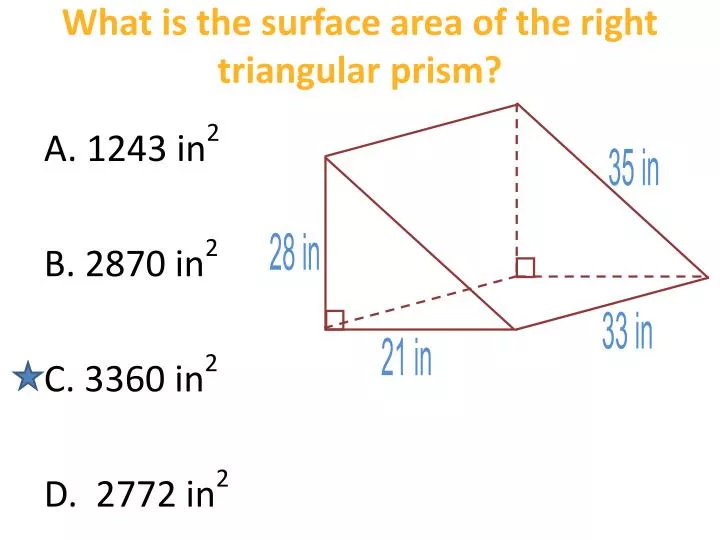

In order to determine we cut the pentagonal prism into its net and open it. Let us take a pentagonal prism, apothem length of the prism is "a", the base length of the prism is "b", and height of the prism is "h. Thus, the perpendicular drawn from one vertex of one base to the other base of the prism will be taken as its height.ĭerivation of Surface Area of Pentagonal Prism In the case of an oblique pentagonal prism, the bases are not perpendicular to each other.In the case of a right pentagonal prism, the bases are perpendicular to each other.In the case of a regular pentagonal prism, both the pentagonal sides are of equal length, and the five rectangular sides with bases being perpendicular to each other.The pentagonal prism formula for calculating surface area remains the same for all kinds of pentagonal prisms. Lateral Surface Area, L = Ph = 5bh sq.If the apothem length of the prism is "a", the base length of the prism is "b" and the height of the prism is "h", the surface area of a pentagonal prism is given as: The surface area of a pentagonal prism gives the area of each face of the prism. A pentagonal prism has two kinds of surface area: Oblique pentagonal prisms: The pentagon faces of a pentagonal prism are not exactly aligned on each other and the rectangular faces are not perpendicular to the pentagon faces.įormula of Surface Area of Pentagonal PrismĪs a pentagonal prism has a lateral surface, thus we can express its lateral surface area as well as total surface area.Right pentagonal prisms: A right pentagonal prism has congruent and parallel pentagonal faces and rectangular faces are perpendicular to the pentagon faces.

In other words, a regular pentagonal prism has congruent rectangular faces. Regular pentagonal prisms: A regular pentagonal prism is a pentagonal prism whose bases have all sides equal, the side faces are rectangles, and the angles between the sides of the base are 108 degrees.We can classify pentagonal prisms on the basis of their rectangular and pentagonal faces. A pentagonal prism has 15 edges, 10 vertices, and 7 faces (2 pentagonal and 5 rectangular). Since it has a flat base, thus it has a total surface area as well as a curved/lateral surface area. The space occupied by the surface of a pentagonal prism is known as the surface area of a pentagonal prism. Find lateral surface area and total surface area.What is the Surface Area of Pentagonal Prism? The base of a triangular prism is ΔABC, where AB = 6 cm, BC = 8 cm and ∠B = 90. Q 1: What will be the surface area of a triangular prism if the apothem length, base length, and height are 5 cm, 10 cm, and 18 cm respectively? 1] Rectangular PrismĪ Rectangular Prism has 2 parallel rectangular bases and 4 rectangular faces.Ī triangular prism has 3 rectangular faces and 2 parallel triangular bases.Ī pentagonal prism has 5 rectangular faces and 2 parallel pentagonal bases.Ī hexagonal prism has six rectangular faces and two parallel hexagonal bases. Prisms are of different types, which are named according to their base shape. The height of the prism is the common edge of two adjacent side faces.

With every lateral face, one edge in common with the base and also with the top.Each face is a parallelogram except base and top.The base and top are parallel and congruent.The volume of a prism =Base Area× Height.



 0 kommentar(er)
0 kommentar(er)
